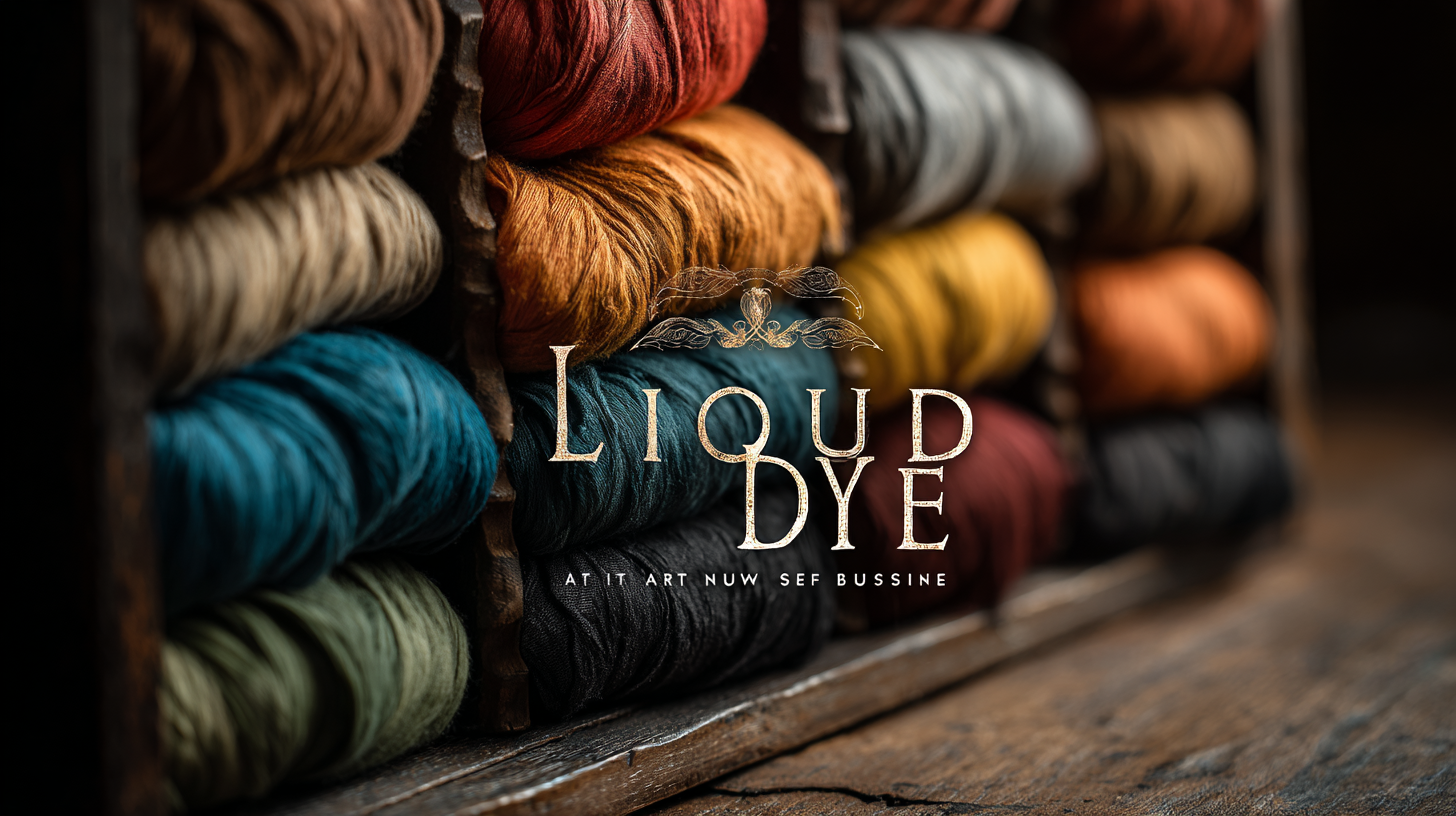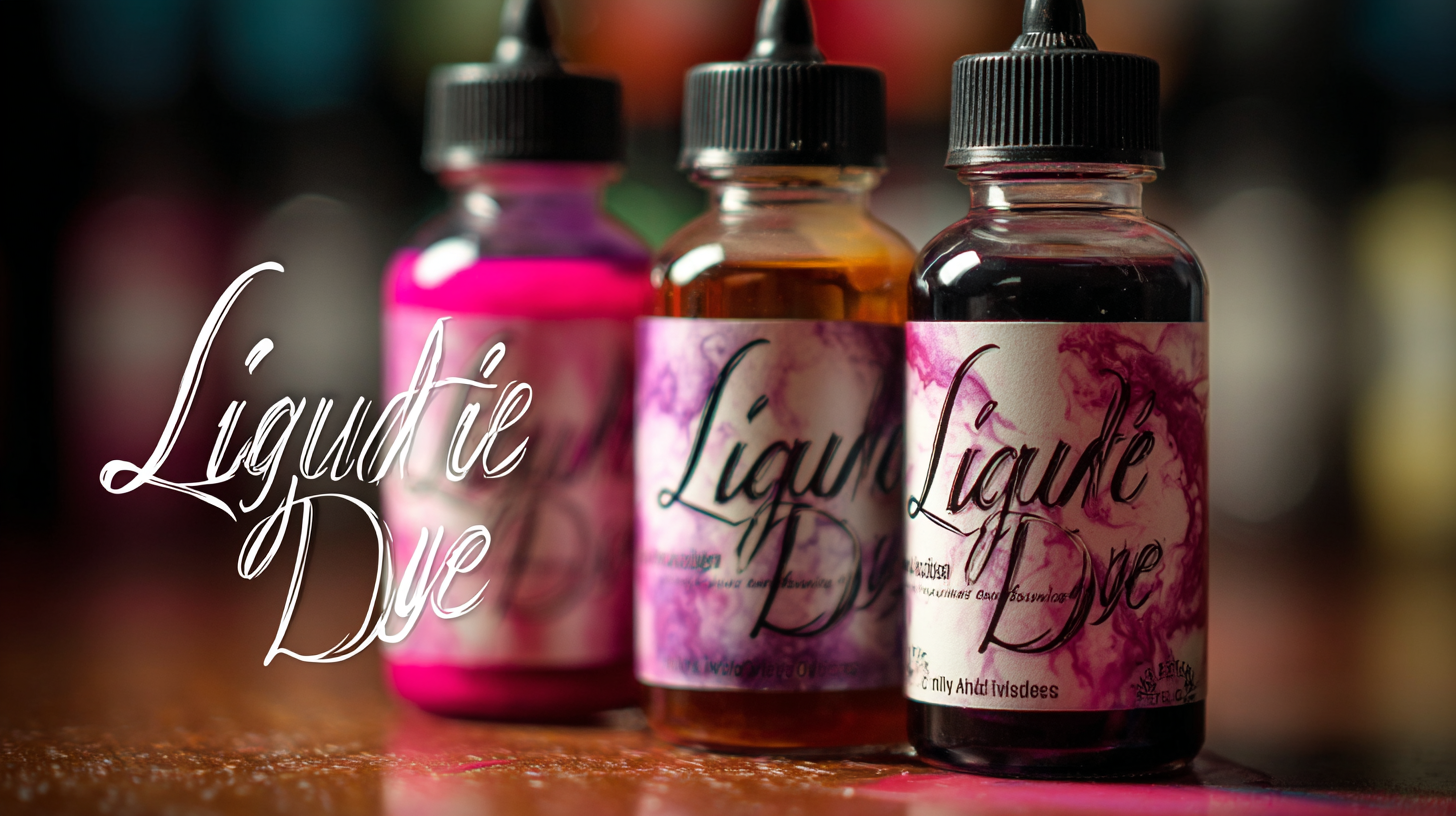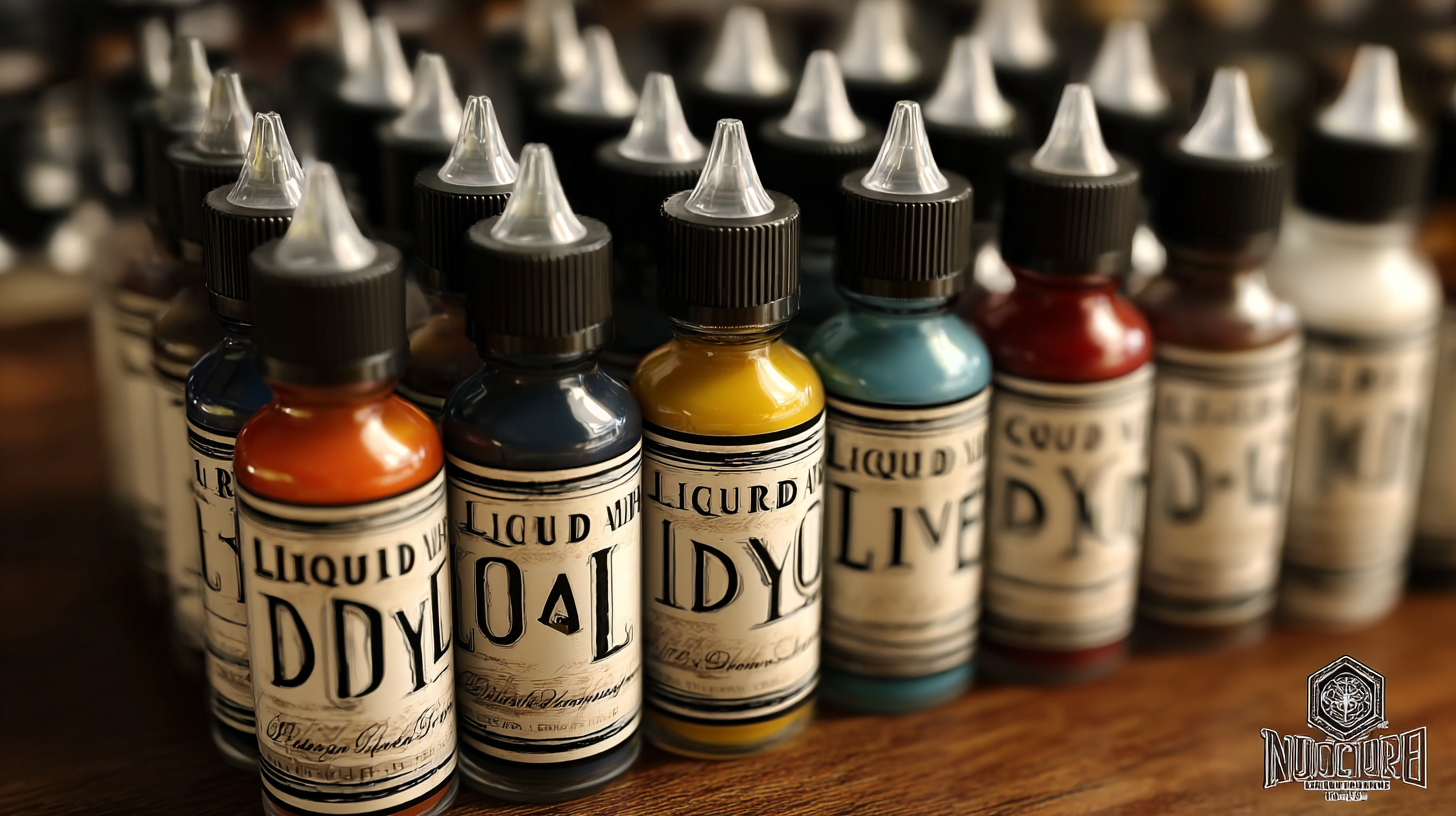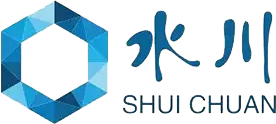In the dynamic world of textile and manufacturing industries, the significance of selecting the right liquid dye cannot be overstated. As per a recent report from Grand View Research, the global liquid dye market was valued at approximately $5.2 billion in 2022 and is expected to expand at a compound annual growth rate (CAGR) of 4.6% from 2023 to 2030. This growth highlights the increasing demand for high-quality and sustainable dye solutions.

Liquid dyes, known for their superior solubility and vibrant color options, play a crucial role in enhancing product aesthetics and functionality. However, with numerous options available, understanding the critical factors to consider when choosing the best liquid dye for your business needs becomes paramount. This blog aims to guide you through the intricacies of liquid dye selection, ensuring that you make informed decisions that elevate your manufacturing processes and meet the demands of an ever-evolving marketplace.
Choosing the right liquid dye is crucial for various industries, as the characteristics and applications of these dyes can significantly impact production quality and end product performance. For instance, textile industries prioritize reactive and disperse dyes, which account for approximately 60% of the global dye market as per the latest report by Grand View Research. Reactive dyes are favored for their vibrant colors and strong adherence to fibers, making them ideal for cotton and other natural fabrics, while disperse dyes are predominantly used for synthetic fibers.
In the food industry, liquid dyes are essential for enhancing product appeal. According to a study by Mordor Intelligence, food-grade dyes such as annatto, beet juice, and carmine have seen a surge in demand due to the growing consumer inclination towards natural ingredients. This has led to a projected growth rate of 5.3% CAGR from 2021 to 2026 for natural food colors. Understanding the differences between synthetic and natural dyes is vital for businesses that wish to align their product offerings with health-conscious consumer trends.
Additionally, the cosmetics sector also heavily relies on liquid dyes, where compliance with safety regulations is paramount. A report from Research and Markets notes that organic dyes are gaining traction due to increased awareness about skin health and environmental concerns. This shift is reflected in a projected growth of 7% annually in the organic color cosmetics segment, indicating a clear preference among consumers for safer, eco-friendly options. Therefore, selecting liquid dyes tailored to specific industry requirements is essential for businesses seeking to enhance product quality and comply with market trends.
When selecting liquid dyes for your business, several crucial factors should be taken into account to ensure compatibility with production processes and end products. First and foremost, the chemical composition of the dye is paramount. According to a report by Smithers Pira, the global market for dyes is projected to reach $4.3 billion by 2027, highlighting the importance of choosing dyes that offer stability and colorfastness. Businesses should consider the specific materials they are working with, as different dyes react uniquely with various substrates. For example, acrylic fabrics may require reactive dyes, while polyester goods could benefit from disperse dyes, enhancing the final product's color vibrancy and durability.
Another vital consideration is the environmental impact of the dyes. The global move towards sustainable practices means that businesses must be vigilant about choosing eco-friendly liquid dyes. Research by the Textile Research Institute indicates that over 20% of industrial water pollution can be attributed to dyeing processes. Therefore, sourcing dyes that comply with environmental regulations and certifications, such as OEKO-TEX or GOTS, is essential for minimizing ecological harm while also appealing to environmentally-conscious consumers. Furthermore, understanding the regulatory landscape can help businesses avoid potential fines and align with consumer demand for sustainable products.
| Dye Type | Color Fastness | Solvent Type | Application Method | Cost per Liter |
|---|---|---|---|---|
| Acid Dye | Excellent | Water | Spraying, Immersion | $25 |
| Reactive Dye | Very Good | Water | Printing, Immersion | $30 |
| Direct Dye | Good | Water | Dipping, Padding | $20 |
| Pigment Dye | Fair | Solvent | Spraying, Coating | $35 |
| Sulfur Dye | Good | Water | Immersion | $18 |
 The importance of quality and consistency in liquid dye production cannot be overstated, especially in an industry where the smallest variation can affect the final product. According to a report by the American Association of Textile Chemists and Colorists, inconsistency in dye quality can lead to up to 30% rework, resulting in significant losses for manufacturers. Maintaining high standards in liquid dye formulation ensures that the color fastness, shade accuracy, and overall performance meet customer expectations.
The importance of quality and consistency in liquid dye production cannot be overstated, especially in an industry where the smallest variation can affect the final product. According to a report by the American Association of Textile Chemists and Colorists, inconsistency in dye quality can lead to up to 30% rework, resulting in significant losses for manufacturers. Maintaining high standards in liquid dye formulation ensures that the color fastness, shade accuracy, and overall performance meet customer expectations.
Moreover, a study from the Global Dye Market Analysis predicts that demand for eco-friendly and consistent dyes will surge by 20% over the next five years. This trend emphasizes the need for businesses to invest in quality production processes that not only enhance consistency but also align with sustainable practices. By prioritizing quality control measures and sourcing raw materials from reputable suppliers, businesses can minimize defects and enhance customer satisfaction, ultimately leading to long-term success in an increasingly competitive market.
In today’s eco-conscious market, sustainable practices in liquid dye manufacturing are not just a trend but a necessity. With the growing awareness of environmental issues, businesses are increasingly seeking out dyes produced with minimal environmental impact. Sustainable manufacturing practices often involve the use of natural ingredients, reduced water consumption, and the implementation of closed-loop systems that recycle materials and waste products.
This shift not only lessens the ecological footprint but also appeals to environmentally-minded consumers, enhancing brand loyalty and marketability.
Furthermore, adopting sustainable practices can lead to significant cost savings in the long run. By optimizing resources and reducing waste, companies can streamline production processes and lower operational costs. For instance, using renewable energy sources and eco-friendly materials can improve efficiency while decreasing reliance on fossil fuels. Moreover, regulatory compliance and potential tax incentives for sustainable operations can provide additional financial benefits. Ultimately, embracing sustainability in liquid dye manufacturing not only fulfills a moral responsibility but also positions a business favorably within a competitive landscape, making it an essential consideration for any forward-thinking company.
Sourcing liquid dyes from reliable Chinese factories can significantly enhance your product line and meet global demands effectively. The first step in this process is to conduct thorough research to identify potential manufacturers that specialize in liquid dyes. Look for factories with a solid reputation, certifications like ISO, and positive reviews from other international clients. Attending trade shows in China or utilizing platforms such as Alibaba and Made-in-China can provide valuable insights into the industry and allow you to make informed choices.

Once you've identified potential suppliers, it's crucial to establish clear communication regarding your specific needs and quality standards. Request samples to evaluate the dye's consistency and performance in your applications. Additionally, consider the factory's production capacity, lead times, and ability to comply with customs regulations to prevent delays. Collaborating with a reliable sourcing agent can also streamline the process and mitigate risks associated with language barriers and cultural differences, ensuring a smooth procurement experience for your business.
